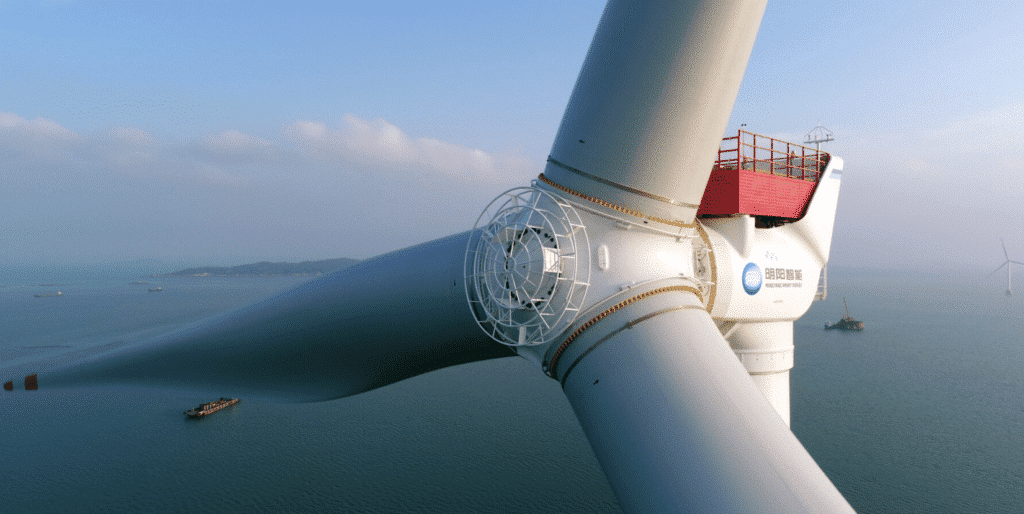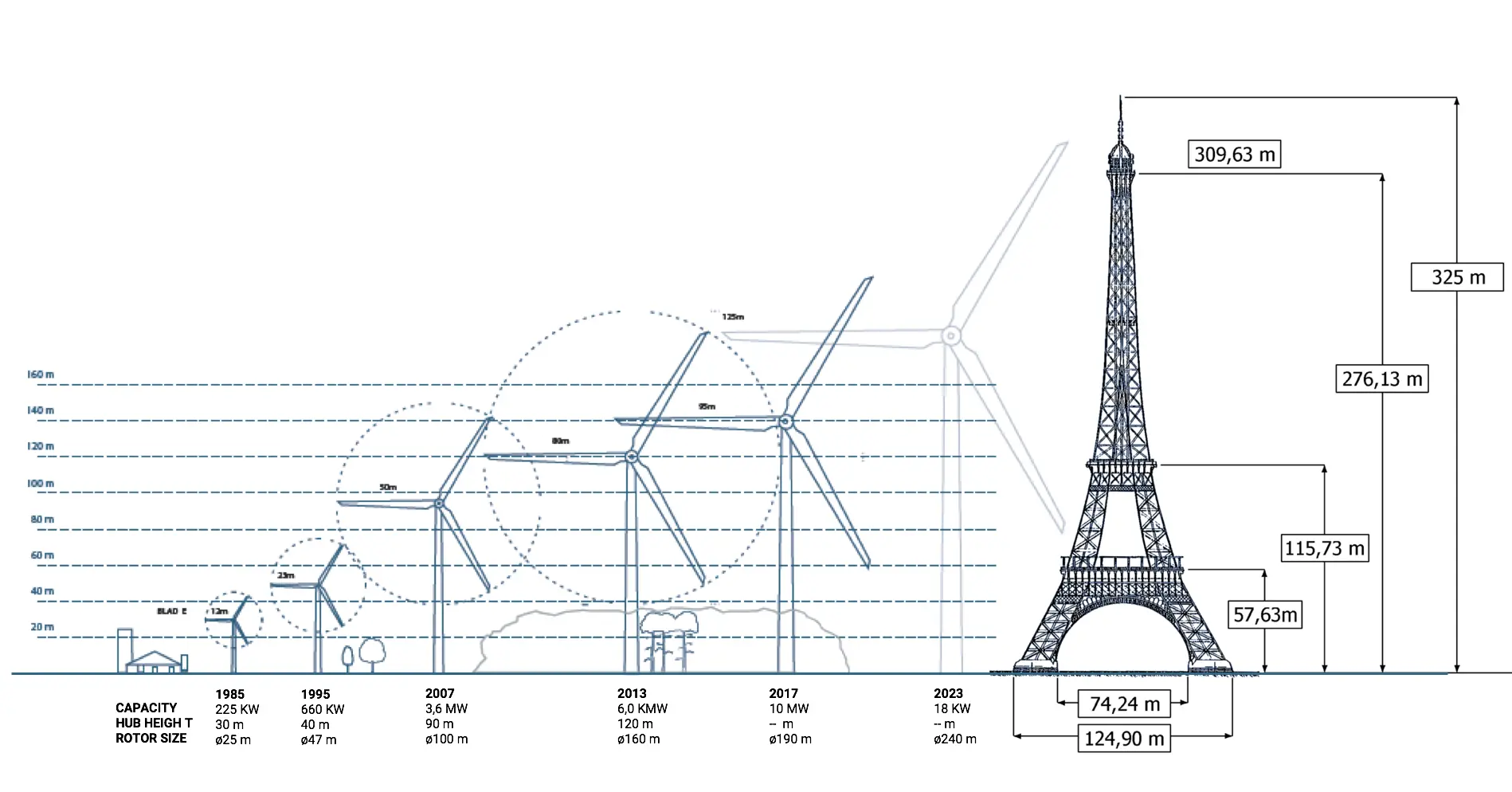A race to build more giant and efficient turbines
The offshore wind industry is witnessing a race to build more giant and efficient turbines as developers seek to lower costs and increase output. So does size really mattters? More giant turbines require fewer installations and less maintenance for the same capacity, making them more attractive to investors and customers.
The blades of a wind turbine are the largest one-piece composite structures built in the world, even larger than the wings of any aircraft, so blades are generally regarded as one of the most critical components of the wind turbine system. They undergo more than one billion load cycles during their operative life, thus making periodic inspection and maintenance essential to keep wind turbines in service.
As the blade size increases both the risk and opportunity related to blades and their impact on the overall LCOE increases, and hence blade investments will be ranked relatively higher on the priority list going forward. However, as the operating experience and hence realized operating cost is limited, it is important to monitor and analyse performance of said blade and hence proactively and consciously manage risk related to the blades.
China is building the world’s biggest wind turbine in the middle of the ocean
China is pushing for more giant turbines, and the Chinese energy company MINGYANG has announced the success on installation of its next flagship offshore wind turbine, MySE 18.X-28X. The giant generator grows up to 70 floors and occupies the area of nine football fields with its vastness. Its 140-meter-long blades are anchored on a rotor with a diameter of over 280 meters. A single rotation can swiftly give electricity to thousands of residents, and they might want to avoid standing close to the giant wind turbine unless they want to see themselves whisked away from where they are standing.
This giant wind turbine can generate 80 GWh of electricity per year, considering an annual average of 8.5m/s for wind speed. The company says it is enough to supply 96,000 residents while reducing CO2 emissions by 66,000 tons. The electricity generator prides itself on being modular and lightweight too, drawn from Mingyang’s comprehensive upgrade and research on the hybrid-drive technology.

Recently MINYANG, has announced its plans to build the world’s largest offshore wind turbine, with blades that can reach almost the height of the Eiffel Tower in Paris. The company said it aims to develop a 22-megawatt turbine with a rotor diameter of more than 310 meters, capturing more wind and generating more power than any existing turbine. According to a spokesperson, the company expects to build the prototype by 2024 or 2025.
But … bigger is better ??
The idea is that bigger is better when it comes to wind turbines. As the world looks toward more consistent renewable energy sources, wind farms are rapidly becoming the top choice for many nations. Wind farms offer benefits beyond generating energy during nighttime. They can also be positioned in territorial waters where stronger winds prevail without impacting the limited land resources that certain countries possess.
Typically, 10 MW turbines have been used for offshore wind projects. However, more giant capacity turbines can generate much higher power outputs while production and installation costs do not increase proportionally. Main European companies like GE and SIEMENS have built large-capacity wind turbines.
However, the industry faces supply-chain reliability issues, quality problems, and logistical restrictions. As per CNBC, one of the most prominent players in wind energy, Siemens Energy, recently scrapped its profit forecast and warned that costly failures at its wind turbine subsidiary Siemens Gamesa could drag on for years.
So I wonder, is it really the right way?
Those machines are on the boundaries of mechanical, so it’s very difficult and unlikely that those machines will be reliable, so I’m not sure if this is the best bet for the wind market.





